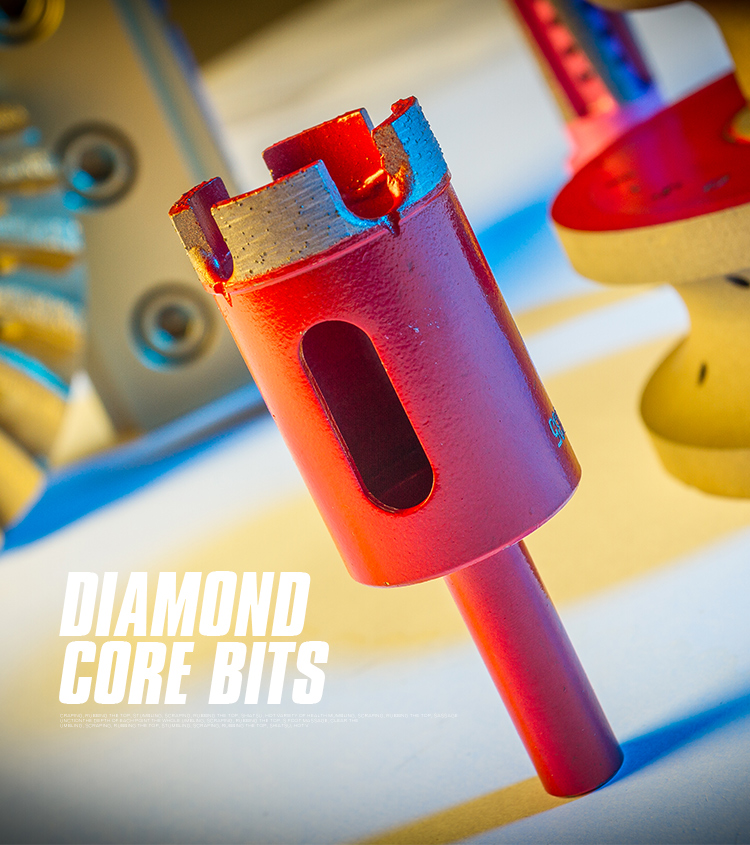Coring bit broken tooth problem:
The core drill bit bears various alternating loads during the drilling process, which directly leads to broken teeth. At the same time, core bits are also subject to eddy currents, rock cutting, grinding and mud erosion. Although these injuries do not lead to broken teeth in the early stages, they often end up with broken teeth.
Coring bit mud bag problem:
The so-called drilling mud bag means that during the drilling process, the cutting force of the rock is very large, and the water is squeezed out from the metaplastic rock, causing the rock cuttings to cling to the drill body. If the cuttings are not removed in time, they will accumulate more and more, resulting in mud pits. Mudbag problems can have a significant negative impact on core bits and tend to cause two problems:
1. The core drill bit accumulates a large amount of cuttings, and the cutting teeth cannot touch the formation, resulting in a decrease in mechanical drilling speed:
2. The coring bit accumulates a large amount of viscous cuttings, making it act like a fuel tank piston to absorb the pressure on the shaft when the pressure fluctuates greatly;


Coring bit eddy current problem:
The core bit is pushed to the well wall under the action of depth lateral imbalance, and one side of the core bit rubs against the well wall. When a diamond moves irregularly, its instantaneous center of rotation is no longer the geometric center of the diamond. The state of motion at this time is called eddy current. Once the vortex is created, it is difficult to stop. At the same time, due to the high speed, the movement of the core bit produces a large centrifugal force, and one side of the core bit is pushed to the well wall, which generates a large friction force, thereby enhancing the eddy current of the core bit and eventually causing damage to the core bit;
Jet Bounce Damage Issues:
In the initial stage of the core bit, due to unreasonable hydraulic design, the jet flow at the bottom of the hole is too large, part of which forms a diffuse flow, and part rebounds to the surface of the core bit. The high-speed jet directly erodes the core bit, first damages the center part of the core bit, and finally damages the entire core bit.







